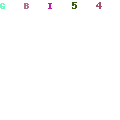
Discover the engagement ring worthy of your eternal love today. Browse our engagement ring collection, available in several settings and valuable metals. A great engagement ring is a ring indicating that the person wearing it is employed to be married, specially in Western cultures. A ring is presented as an engagement gift idea by a partner to their potential spouse when they suggest marriage or directly following a marriage proposal is accepted. It represents a conventional agreement to future relationship. In Western countries, proposal rings are worn generally by women, and rings can feature diamonds or other gemstones. In some cultures men and women wear matching rings, and engagement rings could also be used as wedding rings. In Anglo-Saxon countries, the ring is customarily worn on the left hand ring finger, but customs vary considerably elsewhere across the world.
A pair in a committed partnership may give each other and wear pre-engagement rings, also called friendship or promise rings. Neither the wedding nor any other band is worn during the wedding ceremony, when the wedding ring is put by the groom on the finger of the bride as part of the ceremony, and sometimes by the bride onto the groom's finger. After the wedding, the engagement ring is usually put back on, and is also usually worn on the outside of the wedding ring. Some birdes-to-be have their engagement and wedding rings permanently soldered together after the wedding.
In many countries, proposal rings are positioned on the ring finger of the left hand. At one time it was believed that this little finger contained a vein (the vena amoris) that generated the heart. This idea was popularized by Henry Swinburne in A treatise of Spousals, or Matrimonial Contracts (1686). The tale seems to have its origin in the historic Roman book Attic Times by Aulus Gellius quoting Apion's Aegyptiacorum, where the alleged vein was originally a nervus (a phrase that can be converted either as "nerve" or "sinew").
The popular perception that an engagement ring was originally part of the bride price which represented purchase and ownership of the bride, has been called into question by modern scholarship.
In the second millennium BC, the Roman bride-to-be was given two jewelry, a gold one which she wore in general public, and one made from metal which she wore at home while focusing on home duties. At one time Roman citizens wore jewelry manufactured from iron. In later years senators who dished up as ambassadors were given gold seal rings for established use when abroad. Afterwards the privilege that comes with gold rings was extended to other public officials, then to the knights, later to all freeborn, and finally under Justinian, to freedmen. For several centuries it was the custom for Romans to wear iron rings at home, rare metal rings in public. During this period a girl or woman might receive two engagement rings, one of iron and one of gold.
In the United States, where engagement jewelry are worn by women, diamonds have been extensively featured in engagement bands since the middle of the 20th century. Solitaire rings have one main single diamond. The most common environment for engagement rings is the solitaire prong setting, in 1886 and the six-claw prong setting design sold under the "Tiffany setting" trademark. The modern favorite cut for an engagement ring is the brilliant cut, which provides the most of sparkle to the gemstone. The traditional engagement rings could have different prong settings and bands. Another major category is engagement rings with part stones. Rings with a larger diamond placed in the middle and smaller diamond jewelry on the side fit under its kind. Three-stone diamond engagement rings, sometimes called trinity rings or trilogy rings, are rings with three matching diamonds set horizontally in a line with the greater stone positioned in the center. The three diamonds on the engagement ring are typically said to represent the couple's earlier, present, and future, but others give religious value to the arrangement.
A wedding set, or bridal set, includes an proposal ring and a wedding band that matches and can be acquired as a set. In some cases, the wedding engagement ring looks "incomplete"; it is just when the two halves, engagement and wedding, are assembled that the ring looks whole. In other cases, being married set contains two rings that match stylistically and are worn stacked, although either item would look appropriate as a separate ring. Although the wedding band is not to be worn until the wedding day, both rings are usually sold together as a wedding set. After the wedding, the bride may choose to have the two pieces welded together, to increase convenience and reduce the likelihood of losing one of the bands. A trio ring arranged includes a women wedding ring, women wedding music group and a men's wedding band. These sets often times have matching rings and are lower in price.
Kay Style 150902500 White Gold Engagement Ring with a

Best Top 5 Antique Engagement Rings Design For Events

25 best ideas about Gold engagement rings on Pinterest

25 Amazing Engagement Rings Ideas and Designs

0 Response to "Jean Dousset: From His Cartier Heritage To His High Value"
Post a Comment